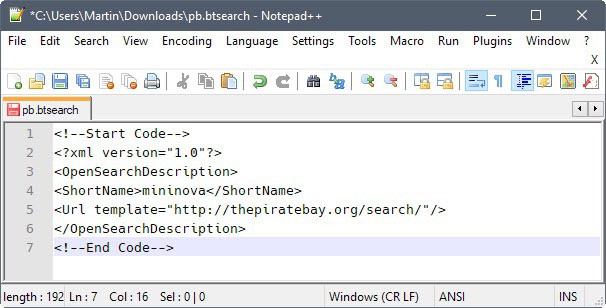

Select "Pervasive Software ODBC-32" from the driver list in the "Create New Data Source" dialog. This displays the "Create New Data Source" dialog.Ģ. Press the "Add" button to add a new data source from the User DSN tab. You will perform the same kind of steps – but how you perform them will be slightly different because the user interface of the tool has changed.ġ. Note the user interface for the ODBC Administrator may look different if you have an older version.
BTSEARCH 16 BTRIEVE HOW TO
ODBC Test 32 is available from Microsoft in the ODBC 3.0 SDK.Ģ.1 How to Create a New Database Using ODBC Administratorįor Win32 applications, you can create a data source in ODBC Administrator as follows. The instructions in this paper use the following tools to create DDFs for Btrieve files using ODBC:ītrieve, Btrieve Maintenance Utility, the ODBC Driver for Btrieve, and ODBC Administrator are available from Pervasive Software Inc. People who do not have this knowledge should use a DDF tool to help them create DDFs. This paper is not intended for end users or application administrators who do not have knowledge of the internal Btrieve file record structure defined by the application. Some familiarity with ODBC is useful but not required. You should read this paper if you want to create DDFs for your Btrieve application using ODBC. The intended audience for this paper consists of people with knowledge of an application’s internal Btrieve file record structure (for example, a software developer who wrote the application would fit into this audience). This paper discusses how to create a new database, how to determine the table definition for an existing Btrieve file, and how to add the table definition to the database. This information in the Btrieve file must match the corresponding table definition or you will get errors from some Scalable SQL and ODBC calls.

The minimum set of DDFs includes FILE.DDF, FIELD.DDF, and INDEX.DDF.ītrieve files contain some information about indexed fields (for example, position, length, and data type), index attributes (unique, modifiable, sort, etc.), and record length. Terminology, files, fields, and indexes/keys, respectively) and reference a Btrieve file for the data. These DDFs describe the data in the database in terms of tables, columns, and indexes (in Btrieve Ò Must have data dictionary files (DDFs) defined. Step 4: Translate Index and Field Information to a Create Table Statement *Ĥ How to Add a Table Definition to the Database *Īppendix B: CREATE TABLE Statement Syntax *Ī Pervasive database that is accessed with ODBC and Scalable SQL Ò Step 3: Complete the Non-Indexed Field Definitions * Step 2: Determine Known Fields and Indexes from the Btrieve File * Step 1: Determine Fixed Record Length and if a Variable Length Field Exists * Creating DDFs for Existing Btrieve Files Using ODBCĢ.1 How to Create a New Database Using ODBC Administrator *Ģ.2 How to Create a Database Programmatically *ģ How to Figure Out What the Table Definition Should Be *


 0 kommentar(er)
0 kommentar(er)
